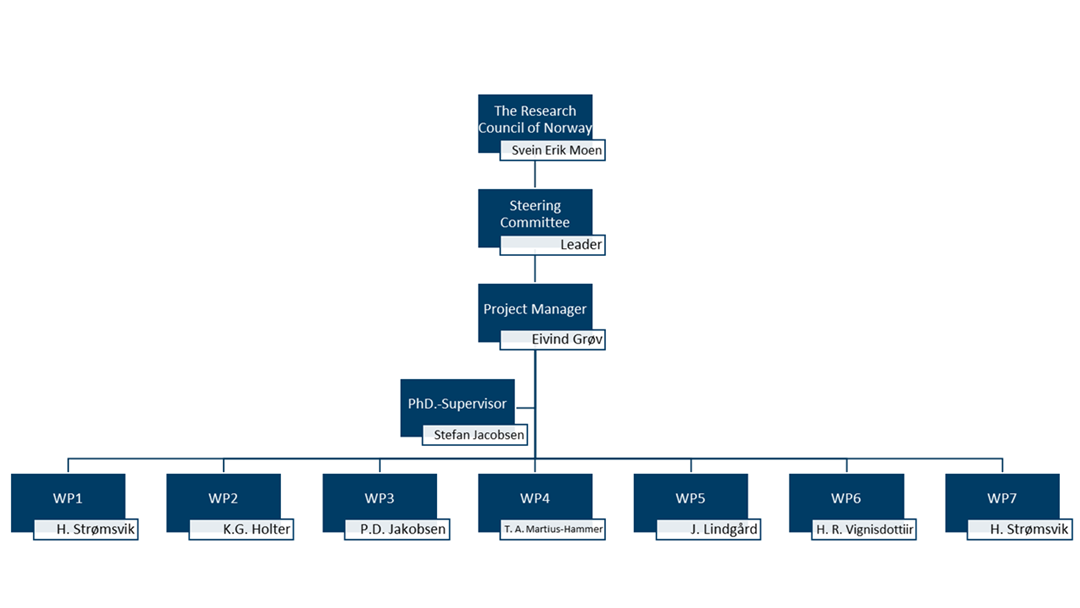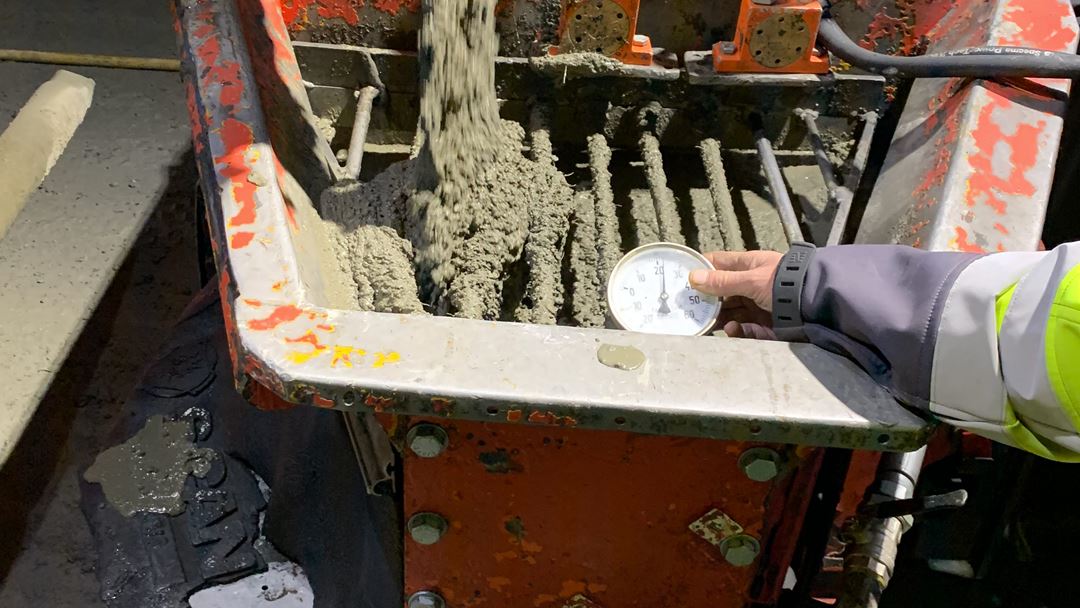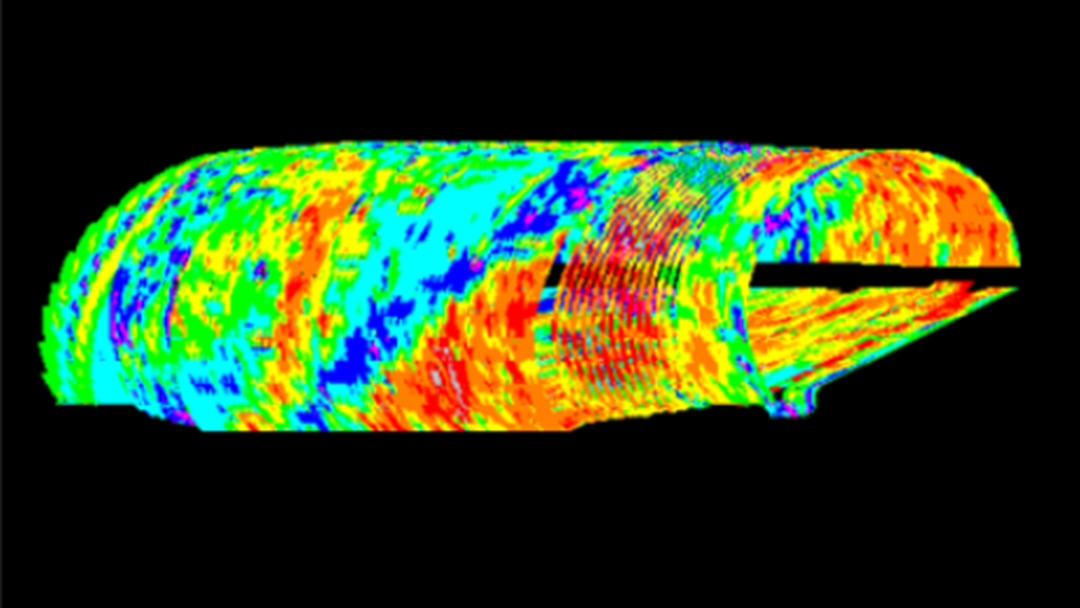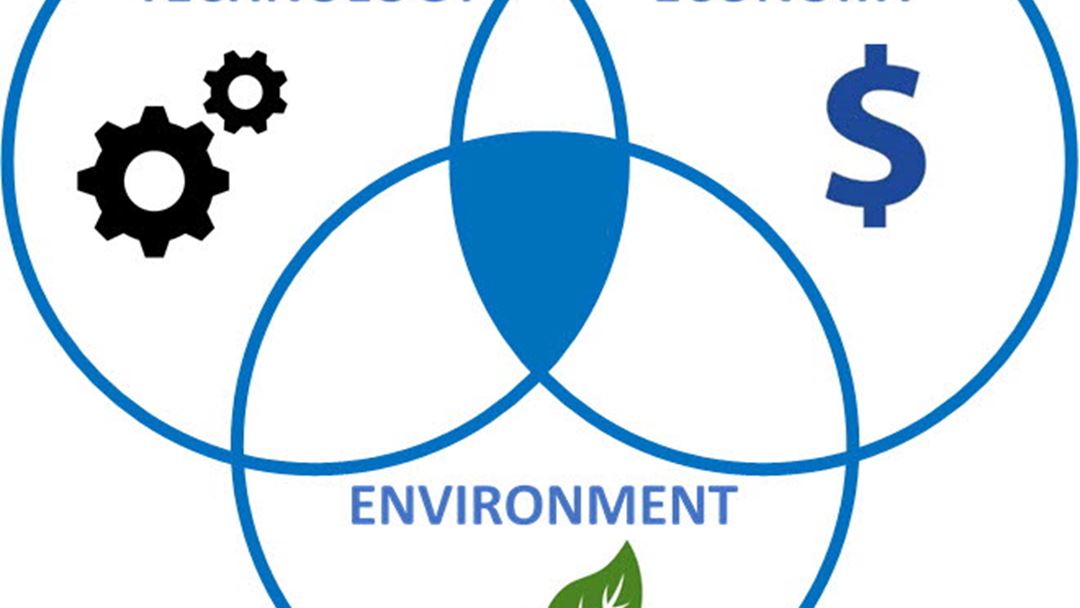Helene Strømsvik
Senior Research Scientist- Name
- Helene Strømsvik
- Title
- Senior Research Scientist
- Phone
- +47 41 50 09 40
- Department
- Infrastructure
- Office
- Trondheim
- Company
- SINTEF AS

Overview work packages:
WP 1: Project Management
WP 2: Shotcrete part materials technology
WP 3: Robotized Production
WP 4: Structural analysis and design
WP 5: Permeability/durability
WP 6: Quantification of environmental performance
WP 7: Dissemination of knowledge
Project Management:
WP1 is an overarching work package on project management plan and execution of the research project that will be established once the project is granted funding. This includes also preparation of procedures and internal steering documents for the project. Establishing and updating of homepage are part of WP1.
Shotcrete part material technology:
WP 2 will investigate the necessary constituents (binders, admixtures, aggregates, fillers, polymers, fibres), and proportioning (particle- matrix systems including fillers and aggregates, target paste volume fraction with respect to spray-ability and fibres). This will be required to obtain the right rheology, sufficient setting characteristics, improved shrinkage and cracking performance without negative effect on long-term properties, permeability and durability. For concrete with high volumes of slowly reacting fly ash, slag or activated clays, this will be a challenge – particularly at low temperatures. The most realistic binderaccelerator systems will be developed and investigated, together with special additives. The following investigations and results are expected from WP 2:
• SCL materials (binders, novel admixtures, polymers, aggregate, fibres)
• Proportioning and rheology of fresh low-carbon concrete suitable for production, transporting/pumping and spraying,
• Possibility for aggregate production from tunnelling debris: assessment- and production methods
• Pilot fresh concrete studies of rheology, pumpability and spray-ability (rebound, build-up thickness in single overpass) methods for measuring pumpability, rebound, build-up and in-situ compaction.
SUPERCON will work with Norcem (NEWSCEM project) and BASF to develop suitable binderaccelerator combinations that give significantly reduced shrinkage and reduced cracking while maintaining long-term properties. SUPERCON plans to investigate micro proportioning combined with particle matrix proportioning for shotcrete to reduce the binder content. Materials selection, proportioning and sprayability studies of concrete mixes will also be investigated following recent results.

Robotized Production
WP 3 will be using the new Visibom Spraying Robot technology. Spray-ability will be studied combining rheology and pumpability, a new high-speed camera and software developed and used at Laval University in Canada will be used to determine the resulting particle speed , and develop methods for measuring spray-ability (rheology, rebound, build-up, compaction/open macro porosity etc). Measurements and quality parameters need to be investigated and clarified in detail, including compaction porosity and fibre alignment. This will be reviewed to give a state of the art as a basis for further research on how the spraying process transforms the wet concrete mix into maximum compacted rapidly setting/hardening SCL.
“Spray-ability” as a term is not precisely defined, but it can be described as a combination of pumpability, low rebound and ability to build up layer thickness in a single spraying overpass. Such spray-ability measurement (methods developed in WP 2) will be applied to the mixes developed for structural design, full-scale and laboratory studies. It might be possible to reduce the extent of imperfections in the sprayed concrete caused by poor in-situ compaction, as well as deposited rebound on the rock wall caused by the spraying process.
This work will include an experimental sprayed concrete program (also spray-ability studies), investigations of the effect of curing conditions on shrinkage, in situ water exposure, instrumentation of shrinkage, and sampling plan of shotcrete. All in one, WP3 deals with the the following investigations:
Pilot-studies will be done and a new shotcrete lab at SINTEF/NTNU is planned to be established in WP2 for detailed parameter studies of spray-ability in WP3.

Structural analysis and design
WP 4 will include design-feasibility studies with respect to various load situations affecting design(mechanical, shrinkage, creep and temperature, fire and explosion, exposure to the ground water from the rock mass, freezing).
Fire protection is typically obtained by including 1 – 2 kg/m3 (≈0.1 – 0.2 vol-%) of polypropylene fibre in the mix design, though other solutions can be obtained, and explosive loads may require other measurements. Analysis of different curing conditions and fire- and explosion loads that are relevant for Norwegian tunnels will be considered. Also imposed deformations due to shrinkage- and temperature variations will be dealt with in the structural analysis in a consistent way to. Studies of shrinkage, restraint and shell-layer spraying sequence and thickness effects on resulting shrinkage and cracking risk will be investigated for various shell- (single-/double) solutions, substrates, executions and materials, including commercial polymer modified shotcrete products.
This includes cooperation between concrete material-, rock-, tunnelling production- and structural analysis and design experts at SINTEF, NTNU and at KTH in Sweden. FEM will be used to study structural analysis and design scenarios of SCL in these conditions.
Structural analysis and design of permanent SCL, including different shell solutions under varying curing conditions, mechanical properties according to current guidelines.
Fire and explosion consequences in tunnels.
Shrinkage induced cracking risk modelling and testing: effect of load, material composition, execution (spraying, curing, restrain).
SUPERCON will be measuring deformation in SCL in situ, as well as on sprayed concrete specimens in the lab. Both free and restrained shrinkage will be studied in the SINTEF lab and in the NTNU TSTM lab system that combines modelling and measurements. The latter gives the complete behaviour of the effects of restrained shrinkage-, temperature- and creep on the cracking risk.

Permeability and durability
The 18 exposure classes of NS-EN 206 are not valid for SC. Therefore, the focus of WP 5 will be on simulating a relevant type of degradation for SCL including the risk of reciprocal degradation effects following cracking.
A wide number of causes to crack formation exist, such as rock deformation, shrinkage, and degrading mechanisms like frost and / or chemical loads (e.g. ASR and sulphate attack).
In addition to studies of cracking and scaling due to frost and associated liquid transport, studies of stress build-up due to bimaterial behaviour during freezing will be analysed. Laboratory experiments will be coupled to a newly developed Non-Linear FEM (NLFEM) using temperature dependant thermal expansion coefficient for simulations.
Since Norwegian tunnels can be exposed to combinations of water originating from the rock mass and freezing/thawing, both accelerated lab tests on smaller specimens and full-scale testing with water pressure from perforated cast-in pipes in different full-scale SCL will be made. Different concrete materials, spraying processes, curing conditions and shell solutions will be studied. Transport, deterioration (internal cracking and surface scaling) and self-healing will be measured in accelerated durability tests in the laboratories. Self-healing will be detected on macroscale as recovery of dynamic modulus of elasticity and/or ultrasonic pulse velocity, and in terms of mechanical properties. The latter normally shows little effect of self-healing even though non-destructive methods and transport properties can show practically complete recovery. Observations and measurements of self-healed microstructure and transport properties can be done by NDT, SEM-BSEI-XRD, and by monitoring of liquid transport. Effects of new types of low-carbon binders (high volume Fly Ash, slag, silica fume, activated clay, composite cements) on self-healing should be compared to the effect of self-healing agents. Also, specimens with membrane solutions and polymer modification will be studied to observe their efficiency to reduce transport and deterioration under very severe moisture load. The following investigations and results are expected under this objective:
Full-scale permeability tests on SCL with varying materials, production processes, curing and design using cast-in perforated pipes with controlled, realistic water pressures
Moisture transport and durability studies of SCL in the lab with accelerated water uptake during wet freeze/thaw exposure, internal cracking, surface scaling damage, freeze/warping tests with moisture gradient in concrete combined with NLFEM simulations of stress build-up, self-healing (non-destructively/dynamic E-modulus, strength, transport, microstructure)
Modelling with NLFEM

Quantification of environmental performance
WP 6 will focus on the environmental performance of the novel developed technology in SUPERCON. The WP will establish a life cycle assessment based on the knowledge acquired in the project. The WP is based on input and findings from WP2-WP5 and uses existing methods and models (e.g. Simapro) for evaluating the environmental performance. Further the environmental benefit is quantified by utilizing modern and innovative materials, local produced aggregates (input from WP2), reduced rebound (WP3), improved service life (WP3 and WP4) and finally reduced amount of cement-based binders.

Dissemination of knowledge
A plan for dissemination will be prepared, and in addition SUPERCON will arrange internal workshops and meetings, coordinate articles and papers, arrange final open work shop for the industry. Summary report from the project will be prepared for the tunnelling industry.